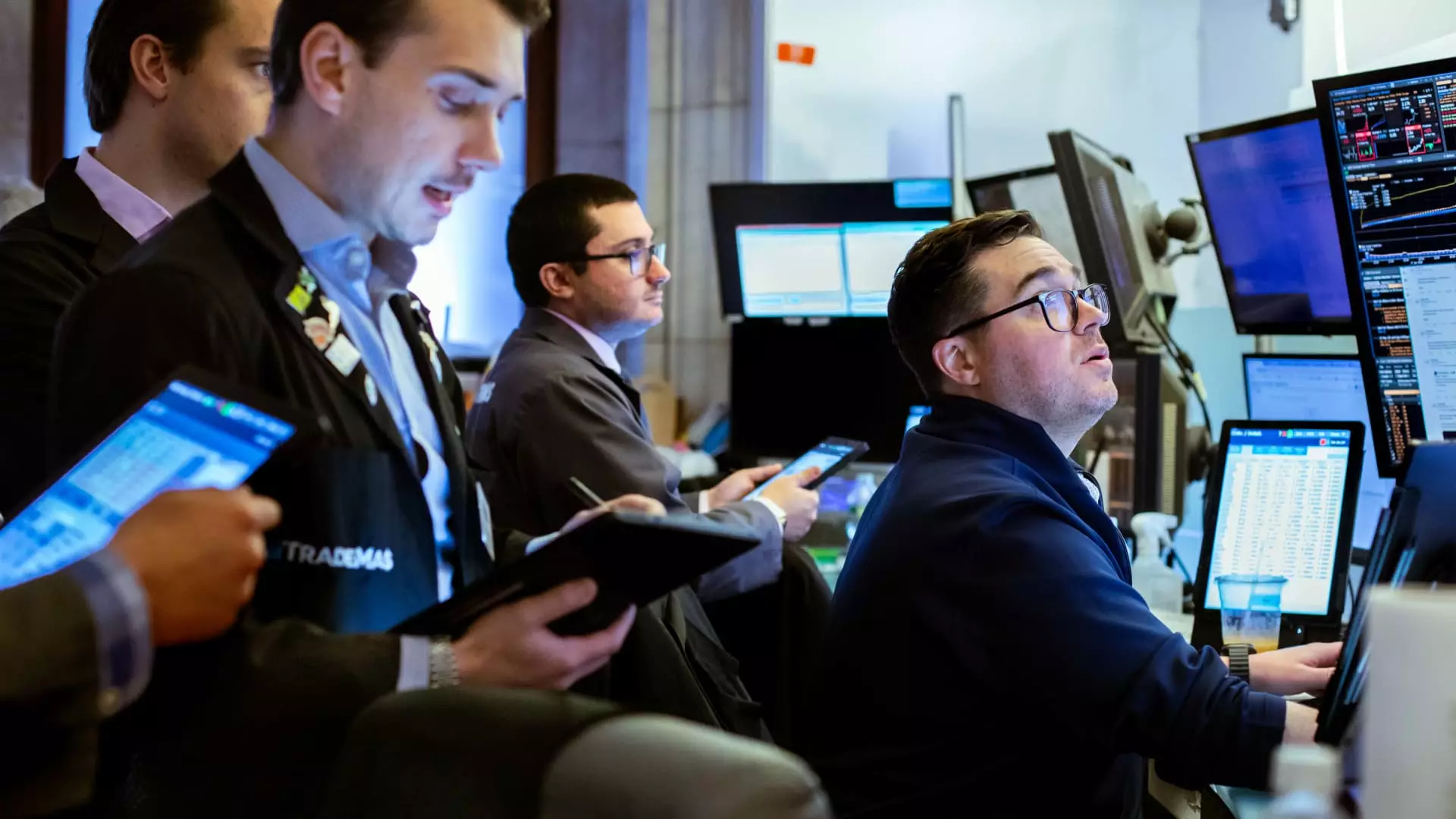In a striking display of market resilience, the S&P 500 surged to the brink of a record high, defying various dilemmas that had threatened its stability just months prior. The culmination of turbulent economic factors—ranging from trade wars and geopolitical tensions to inflation concerns—nearly pushed investors into a state of panic. However, as the benchmark index closed at an impressive 6,141.02, its climb of 0.8% stands as testimony to investors’ burgeoning confidence amidst adversity. This was not merely another uptick in stock prices; it echoed a deeper sentiment of optimism that suggests the economy is not just surviving but thriving against formidable odds.
Fundamentally, a 2.9% uptick over the week speaks volumes about investor psyche and market dynamics; it reflects a broader narrative where optimism wrestles with anxiety. The imminent deadlines posed by tariffs seem to have lost their grip on market sentiment, particularly after a White House spokesperson downplayed the situation, suggesting that critical decisions are ultimately in the hands of leadership. This sounds less like a government communications strategy and more like a rallying cry for market stability, revealing a political atmosphere that values pragmatism over political theatrics.
The Ebb and Flow of Economic Sentiments
What distinguishes this moment from previous downturns is the market’s nuanced understanding and interpretation of economic signals. Jamie Cox from Harris Financial Group suggested that we are observing a pivotal shift; investors seem to be looking past fleeting turbulence, lured by the prospect of lower interest rates and less regulation. This interpretation challenges the mainstream narrative that tends to focus on a looming “stagflation” that investors have been warned to prepare for. Instead, what we observe is a market daring to envision a brighter landscape, particularly as corporate earnings remain robust and the labor market shows signs of stability.
It’s noteworthy to mention that major tech players like Nvidia, Meta, and Alphabet have been instrumental in this remarkable rebound. Nvidia, for instance, surged to an all-time high, reclaiming its status not just as a tech giant but a frontrunner in the artificial intelligence revolution. In the face of misguided fears regarding its competition and spending cap from China, the company’s stock has surged nearly 80% since April, showcasing the power of innovation and technological foresight over apprehensive speculations.
Global Implications and Political Intricacies
The geopolitical environment, historically a source of uncertainty, is also pivotal in this narrative. Just as concerns over inflation were exacerbated by geopolitical volatility, they have now lessened with the fragile truce between Israel and Iran appearing to hold. Herein lies a larger question: is the market’s optimism premature? Wall Street has a consistent propensity to overlook risks until they manifest tangibly. As negotiations between U.S. officials and Iran loom, it remains to be seen whether investors will remain steadfast in their hope or if the tides will turn, sending them back to the drawing board of strategy.
Despite oil prices plummeting, which contributes to alleviating inflation worries, it remains imperative to remember that such fluctuations can have cascading effects across various sectors. The initial surge in oil prices earlier this week reflects the intricate ties between global events and domestic economic sentiment. The drop could be a boon for consumers, yet it also serves as a reminder of how quickly the landscape can shift—a point that investors must always keep in perspective.
The stock market’s powerful statement of resilience in the midst of chaos speaks to a collective belief in recovery and growth. Initial jobless claims falling below expectations underscores a labor market buoyed by optimism. Yet, while we recognize the positive trajectory, we must approach this newfound zeal with caution. Market stability may currently be on display, but the history of economics reminds us that while optimism can drive markets, it is often the unforeseen that disrupts this delicate balance.


Leave a Reply